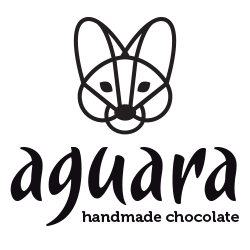The history of chocolate is long and incredibly exciting, isn’t it?
Since the discovery of the magical wood of cocoa, through the knowledge of the use of cocoa beans and the acquisition of chocolate, it continues to intrigue and capture millions of fans. The sweet history of chocolate is deeply rooted in the tradition and culture of many civilizations. Millenniums back, chocolate is the magical pleasure that continually enchants us and relentlessly binds ourselves.
Why was this plant so magical in ancient civilizations?
How has its use throughout history evolved?

The Mayan chief defends the subject to touch a bowl of the chocolate the photo was taken from the website
Ancient civilizations and chocolate chronology
It is believed that the rich history of cocoa and chocolate probably started more than 4,000 years ago, although according to some data, this period is even longer.BC Central America is considered to be a place of cocoa origin, to be a more precise area around today’s Mexico and Guatemala. The history we follow today teaches us that cocoa beans began to be grown in 1200 B.C. The cultivation of the people is primarily due to the people of Olmec. Over time, the popularization of cacao and beverage made from its grain was accepted by Maya (600 BC), Toltec and the Aztec. The fact that cocoa was grown is the existence of word cocoa 1300 BC.
The study of the everyday life of ancient civilization archaeologists has confirmed this theory. During numerous excavations, there was found pottery for which they found that it could be used for drinking various beverages. The confirmation of this statement was only followed after analyzing the dark precipitation in one of the vessels. The components of caffeine and theobromine, found in cocoa, have provided a definitive conclusion on the existence and consumption of chocolate. Founded containers were small, elegant, harmoniously decorated, which confirms that chocolate was drunk on special occasions. It is believed that the fermentation of the pulp, which surrounds the cocoa beans, yields a drink approximately similar to today’s chocolate. However, at some point, to speed up fermentation, someone began to chew the cocoa beans and discovered the authentic taste of cocoa.
Ancient civilizations of Maya and Asti used chocolates in religious rituals.
The first plantations of the Mayan cacao beans were raised in 600 BC. in Yucatan, Mexico. By grinding cocoa beans, adding water, and chili peppers, they prepared the beverage they used for different rituals. The privilege of drinking it was privilege by members of the royal family and those of the upper classes. The Maya were later saving this drink, streaming from one to another court, perfected by getting foam. A special seal and mass popularization of the cocoa drink was obtained by adding various spices, vanilla, honey, flowers … Considering the potential of cocoa, many years later, they started fruit trading and also considered cocoa as money.
Unlike Maya, which had drink chocolate as a warm beverage, the Aztecs consumed it cold. It was known to them as šočikakauatl, in the literal translation of blooming chocolate, and he had a sophisticated and rich taste. Only the members of the royal family had the privilege of enjoying it in the Aztec. In a somewhat different form, chocolate was consumed by warriors, through a cake made from corn flour, cocoa powder, and powdered peppers. They often used it as a wound scarf. The unwilling enthusiasm with this drink was especially cultivated by ruler Astação Montezuma, who claimed that he works on the ground, removes fatigue and improves mood.
The arrival of Christopher Columbus on the New World’s soil and the discovery of a magical plant-cocoa
an extremely important year and the spread of the cult of chocolate to distant continents was in 1502 when Columbus landed on an island near Honduras. It was from there that the magical, coco-grains offered by the locals were brought home. After this event, a few years later, in 1519. Hernan Cortez came to the suburbs of the Aztec people. Because of the belief in the legend of the god Kecalkoati, the local population and the king have just mixed this Spaniard with their missing god and offered cocoa beans as redemption. After visiting the plantations and drinking red, bitter, and spicy cocoa beans, Cortez, who was in search of gold, discovered that they had a value like pure gold. So it’s 1528. he exported the first quantities of cocoa beans to Spain and handed over a recipe for the magic potion, which was kept secret for 80 years after that.
And what happened later, how and where the story about cocoa beans and chocolate spread, you can read below.







